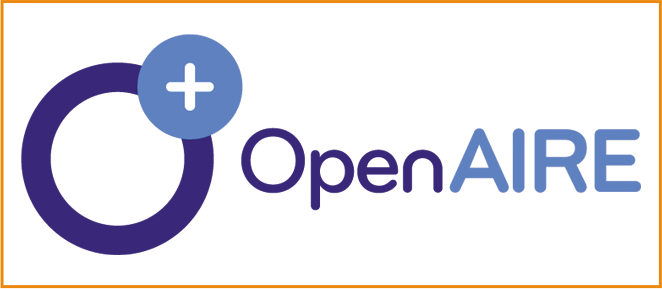Faktor-faktor yang Mempengaruhi Penggunaan dan Penerimaan Jaringan 5G: Aplikasi Model UTAUT
Abstract
Keywords
Full Text:
PDFReferences
NTT DOCOMO, “5G Radio Access: Requirements, Concept and Technologies,” NTT DOCOMO White Paper, Jul. 2014. [Online]. Available: https://gsacom.com/paper/docomo-5g-radio-access-requirements-concept-and-technologies/
D. E. T. Lufianawati and C. A. Wicaksana, “Analisis Kesiapan Indonesia dalam Menghadapi Teknologi 5G,” Setrum: Sistem Kendali-Tenaga-elektronika-telekomunikasi-komputer, vol. 9, no. 1, p. 17, Apr. 2020, doi: 10.36055/setrum.v9i1.8191.
Siaran Pers No. 279/HM/Kominfo/08/2021, “Tiga Operator Buka Layanan 5G, Menkominfo: Pemerintah Siapkan TKDN 5G,” Kementerian Komunikasi dan Informatika Republik Indonesia, Aug. 26, 2021. [Online]. Available: https://www.kominfo.go.id/content/detail/36321/siaran-pers-no-279hmkominfo082021-tentang-tiga-operator-buka-layanan-5g-menkominfo-pemerintah-siapkan-tkdn-5g/0/siaran_pers (accessed Dec. 5, 2022).
V. B. Kusnandar, “Telkomsel Juarai Kepemilikan BTS Terbanyak di Indonesia, Capai 237 Ribu BTS,” Databoks, Sep. 27, 2021. [Online].
Available: https://databoks.katadata.co.id/datapublish/2021/09/27/telkomsel-juarai-kepemilikan-bts-terbanyak-di-indonesia-capai-237-ribu-bts (accessed Oct. 20, 2022).
M. I. Mahdi, “Berapa Jumlah Pengguna 5G di Asia Tenggara?,” Data Indonesia, Jan. 6, 2022. [Online]. Available: https://dataindonesia.id/digital/detail/berapa-jumlah-pengguna-5g-di-asia-tenggara (accessed Nov. 3, 2022).
I. Paridawati, I. Daulay, and R. Amalia, “Persepsi Orangtua Terhadap Penggunaan Smartphone pada Anak Usia Dini di Desa Indrasakti Kecamatan Tapung Kabupaten Kampar,” JOTE, vol. 2, no. 2, pp. 28–34, 2021.
N. P. Bestari, “Kapan Seluruh Warga RI Bisa Nikmati Internet Cepat 5G?,” CNBC Indonesia, Aug. 26, 2021. [Online]. Available: https://www.cnbcindonesia.com/tech/20210826181303-37-271564/kapan-seluruh-warga-ri-bisa-nikmati-internet-cepat-5g (accessed Dec. 12, 2022).
S. Kumar, A. S. Dixit, R. R. Malekar, H. D. Raut, and L. K. Shevada, “Fifth generation antennas: A comprehensive review of design and performance enhancement techniques,” IEEE Access, vol. 8, pp. 163568–163593, 2020, doi: 10.1109/ACCESS.2020.3020952.
V. Venkatesh, M. G. Morris, G. B. Davis, and F. D. Davis, “User acceptance of information technology: Toward a unified view,” MIS Q., vol. 27, no. 3, pp. 425–478, Sep. 2003, doi: 10.2307/30036540.
H. Tanuwijaya and R. Sarno, “Comparation of CobiT Maturity Model and Structural Equation Model for Measuring the Alignment Between University Academic Regulations and Information Technology Goals,” IJCSNS Int. J. Comput. Sci. Netw. Secur., vol. 10, no. 6, pp. 80–92, Jun. 2010, [Online]. Available: http://paper.ijcsns.org/07_book/201006/20100611.pdf
H. Hwang and Y. Takane, “Generalized structured component analysis,” Psychometrika, vol. 69, no. 1, pp. 81–99, Mar. 2004, doi: 10.1007/BF02295841.
S. Kim, R. Cardwell, and H. Hwang, “Using R Package gesca for generalized structured component analysis,” Behaviormetrika, vol. 44, no. 1, pp. 3–23, Jan. 2017, doi: 10.1007/s41237-016-0002-8.
J. F. Hair, W. C. Black, B. J. Babin, and R. E. Anderson, Multivariate Data Analysis 7th Edition. Harlow, England: Pearson Education Limited, 2014, ISBN: 9781292021904.
L. Stanley, D. W. Hosmer Jr., J. Klar, and S. K. Lwanga, Besar Dampel dalam Penelitian Kesehatan. Yogyakarta: Gadjah Mada University Press, 1997, ISBN: 9794204242.
K. Keni, L. R. Aritonang, and A. S. Pamungkas, “Purchase Intention, Satisfaction, Interest, and Previous Purchase Behaviour,” Int. J. Innov. Creat. Change, vol. 5, no. 6, pp. 1129–1144, 2019. [Online]. Available: http://repository.untar.ac.id/
E. Ramadhani, N. Nurjati, N. Nurhasanah, N. Salwa, and L. R. Siregar, “Generalized structured component analysis (GSCA) method in evaluating service satisfaction at FMIPA Syiah Kuala University,” J. Nat., vol. 23, no. 2, pp. 98–109, Jun. 2023, doi: 10.24815/jn.v23i2.27808.
D. V. Ferezagia, K. A. Safitri, N. F. Dewi, and D. Anggara, “Generalized Structured Component Analysis to Analyze Measurement Models: Utilization of Health Insurance,” in Journal of Physics: Conference Series, IOP Publishing Ltd, Apr. 2021, vol. 1863, no. 1, p. 012042, doi: 10.1088/1742-6596/1863/1/012042.
F. Fitriani, A. Rusgiyono, and T. Widiharih, “Penerapan Metode Generalized Structured Component Analysis pada Kepuasan Konsumen (Studi Kasus: Pasien Klinik Q),” Jurnal Gaussian, vol. 9, no. 4, pp. 454–463, Dec. 2020, [Online]. Available: https://ejournal3.undip.ac.id/index.php/gaussian/article/view/29416
H. Hwang, N. Malhotra, Y. Kim, M. A. Tomiuk, and S. Hong, “A Comparative Study on Parameter Recovery of Three Approaches to Structural Equation Modeling,” J. Mark. Res., vol. 47, no. 4, pp. 699–712, Aug. 2010, doi: 10.1509/jmkr.47.4.699.
D. V. Ferezagia, K. A. Safitri, N. F. Dewi, and D. Anggara, “Generalized Structured Component Analysis to Analyze Measurement Models: Utilization of Health Insurance,” in Journal of Physics: Conference Series, IOP Publishing Ltd, Apr. 2021, vol. 1863, no. 1, p. 012042, doi: 10.1088/1742-6596/1863/1/012042.
DOI: http://dx.doi.org/10.36448/expert.v13i1.3182
Refbacks
- » —
EXPERT: Jurnal Manajemen Sistem Informasi dan Teknologi
Published by Pusat Studi Teknologi Informasi, Fakultas Ilmu Komputer, Universitas Bandar Lampung
Gedung M Lt.2 Pascasarjana Universitas Bandar Lampung
Jln Zainal Abidin Pagaralam No.89 Gedong Meneng, Rajabasa, Bandar Lampung,
LAMPUNG, INDONESIA
Indexed by:













This work is licensed under a Creative Commons Attribution 4.0 International License.







